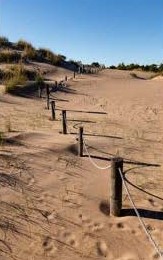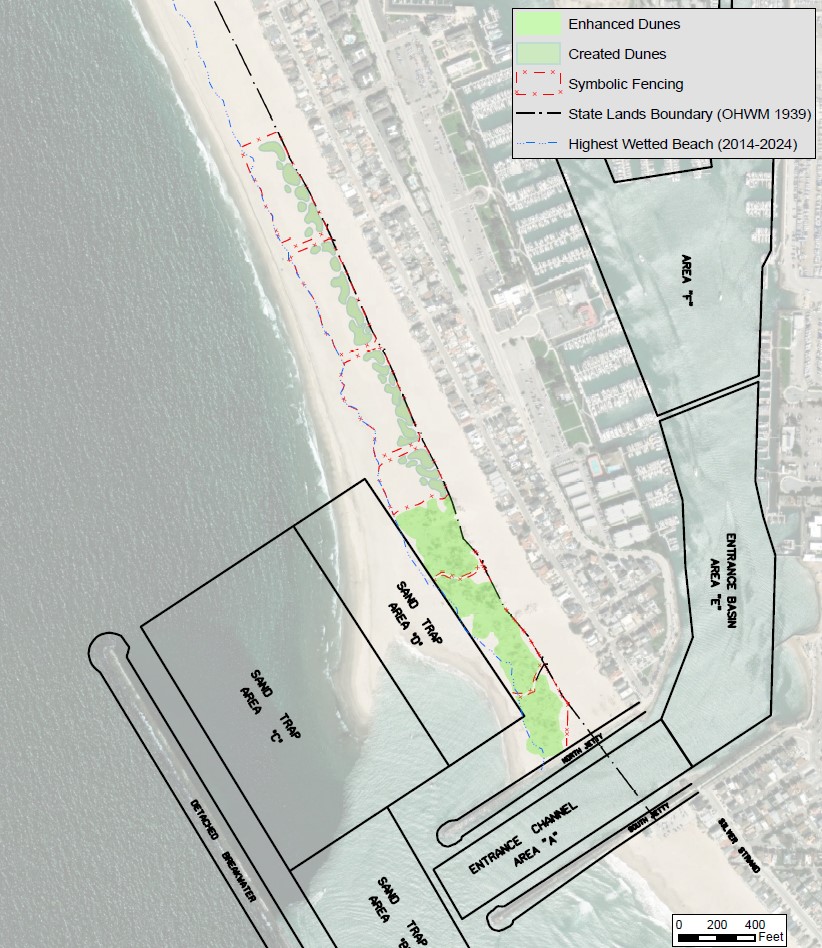Channel Islands & Port Hueneme Harbors Maintenance Dredging Project – Dune Habitat Restoration
1. Why is the U.S. Army Corps of Engineers planning to conduct dune habitat restoration on Hollywood Beach?
The restoration effort aims to offset impacts of federal maintenance dredging on the threatened western snowy plover and endangered California least tern -species protected under the Endangered Species Act - and sensitive dune habitat. Maintenance dredging is essential for keeping harbor inlets navigable and sustaining downcoast beaches. However, it affects these species and their habitat, particularly at Channel Islands Harbor. The harbor’s north entrance jetty and detached breakwater trap sand, creating a widened beach and coastal foredune habitat used by the plover and tern. Dredging disrupts these areas and adversely affects designated critical habitat for the plover. To address these effects, the Corps consulted with the U.S. Fish and Wildlife Service under section 7 of the Endangered Species Act. This led to a biological opinion requiring the development and implementation of a dune restoration plan. Additionally, the California Coastal Commission conditionally concurred with the Corps’ consistency determination under section 307 of the Coastal Zone Management Act, which also requires the development and implementation of a dune restoration plan.
2. Will the restoration plan utilize herbicides?
No, there will be no use of herbicides.
3. Where would the dune habitat restoration occur?
The restoration will take place on public lands (see map below)
4. Why is the dune habitat restoration occurring on Hollywood Beach instead of other beaches?
Hollywood Beach is within the maintenance dredging impact area, and restoration efforts here would support species affected by dredging operations by providing replacement nesting and foraging habitat.
5. What type of dune habitat restoration is proposed?
The restoration will enhance and establish coastal dune habitat, incorporating low-profile dunes ranging from 0.5 to 4 feet in height and sparse native vegetation.
6. What type of fencing would be installed and why is it needed?
Low-profile posts/stakes and rope, along with educational signage, will be installed to inform the public and help prevent trampling of restored sensitive habitat.
7. Will this fencing block access to the beach?
The fencing serves a symbolic purpose rather than a restrictive one. Designed with openings, it allows for pedestrians to move freely through the restoration area, maintaining alignment with existing access routes from public streets to the beach.
8. What is shown in the video of a motorized survey vehicle operating on Hollywood Beach on March 20, 2025?
A: On March 20, 2025, a U.S. Army Corps of Engineers employee - not a Corps' contractor - conducted post-construction topographic surveying for the Corps’ Channel Islands Maintenance Dredging Project. The survey work took place within the sand dunes and sand trap project areas on Hollywood Beach using a utility task vehicle equipped with surveying instruments. The vehicle moved at slow speeds, typically 2-3 miles per hour, with a maximum of 5 miles per hour, carefully avoiding dense vegetation and ensuring no people or animals were in the vicinity. The Corps did not record the video; instead, it was recorded and posted on the web without the employee’s consent.
9. What type of fencing would be installed and why is it needed?
A: Low-profile posts/stakes, connected by rope, will be installed alongside educational signage. These measures aim to inform the public and prevent trampling of restored sensitive habitat. (The fencing setup is shown in the image below).

10. Will the Corps be holding a public outreach to discuss the plan?
The Corps is organizing a public outreach event to discuss the restoration plan. The date for this event is still being determined.
